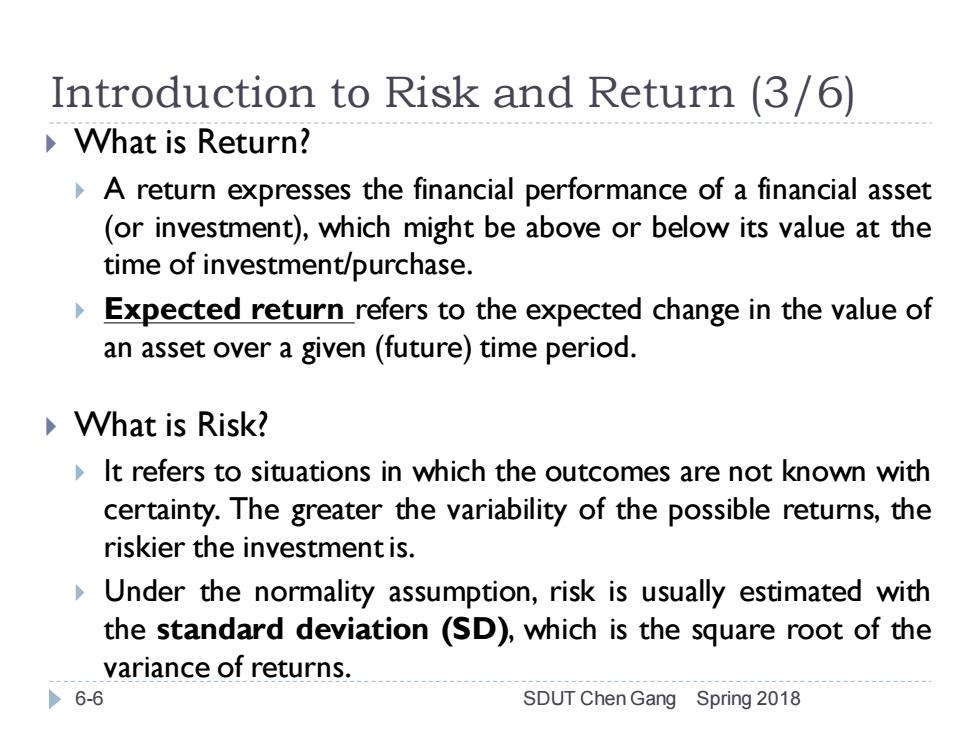
Introduction to Risk and Return (3/6) What is Return? A return expresses the financial performance of a financial asset (or investment),which might be above or below its value at the time of investment/purchase. Expected return refers to the expected change in the value of an asset over a given(future)time period. What is Risk? It refers to situations in which the outcomes are not known with certainty.The greater the variability of the possible returns,the riskier the investment is. Under the normality assumption,risk is usually estimated with the standard deviation (SD),which is the square root of the variance of returns. >6-6 SDUT Chen Gang Spring 2018
Introduction to Risk and Return (3/6) What is Return? A return expresses the financial performance of a financial asset (or investment), which might be above or below its value at the time of investment/purchase. Expected return refers to the expected change in the value of an asset over a given (future) time period. What is Risk? It refers to situations in which the outcomes are not known with certainty. The greater the variability of the possible returns, the riskier the investmentis. Under the normality assumption, risk is usually estimated with the standard deviation (SD), which is the square root of the variance of returns. 6-6 SDUT Chen Gang Spring 2018
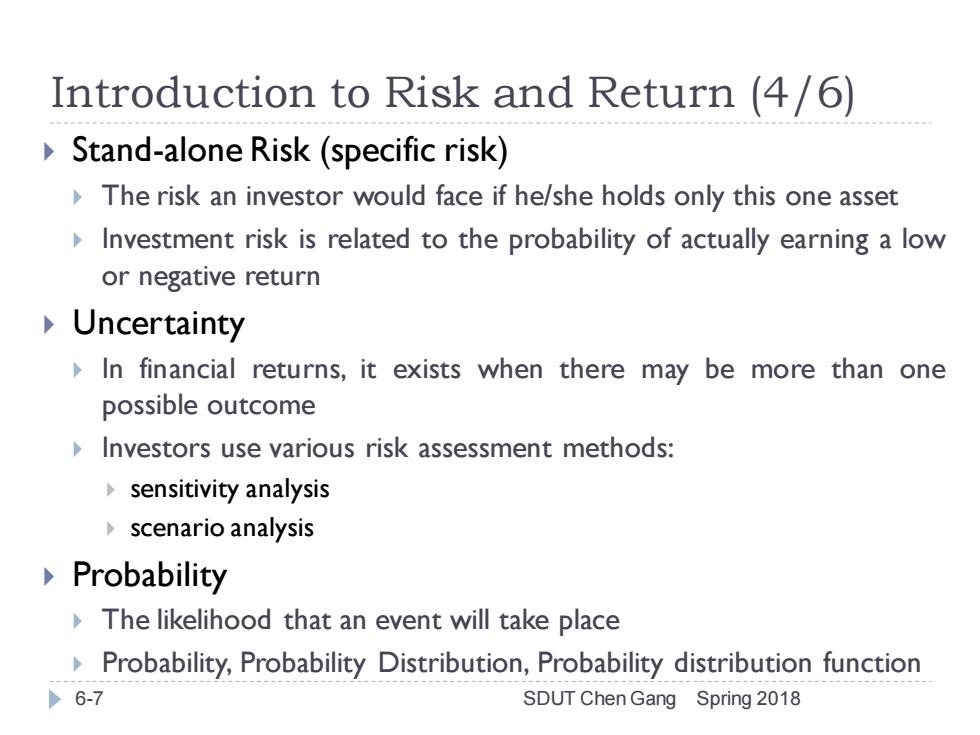
Introduction to Risk and Return (4/6) Stand-alone Risk(specific risk) The risk an investor would face if he/she holds only this one asset Investment risk is related to the probability of actually earning a low or negative return Uncertainty In financial returns,it exists when there may be more than one possible outcome Investors use various risk assessment methods: sensitivity analysis scenario analysis Probability The likelihood that an event will take place Probability,Probability Distribution,Probability distribution function >6-7 SDUT Chen Gang Spring 2018
Stand-alone Risk (specific risk) The risk an investor would face if he/she holds only this one asset Investment risk is related to the probability of actually earning a low or negative return Uncertainty In financial returns, it exists when there may be more than one possible outcome Investors use various risk assessment methods: sensitivity analysis scenario analysis Probability The likelihood that an event will take place Probability, Probability Distribution, Probability distribution function 6-7 SDUT Chen Gang Spring 2018 Introduction to Risk and Return (4/6)
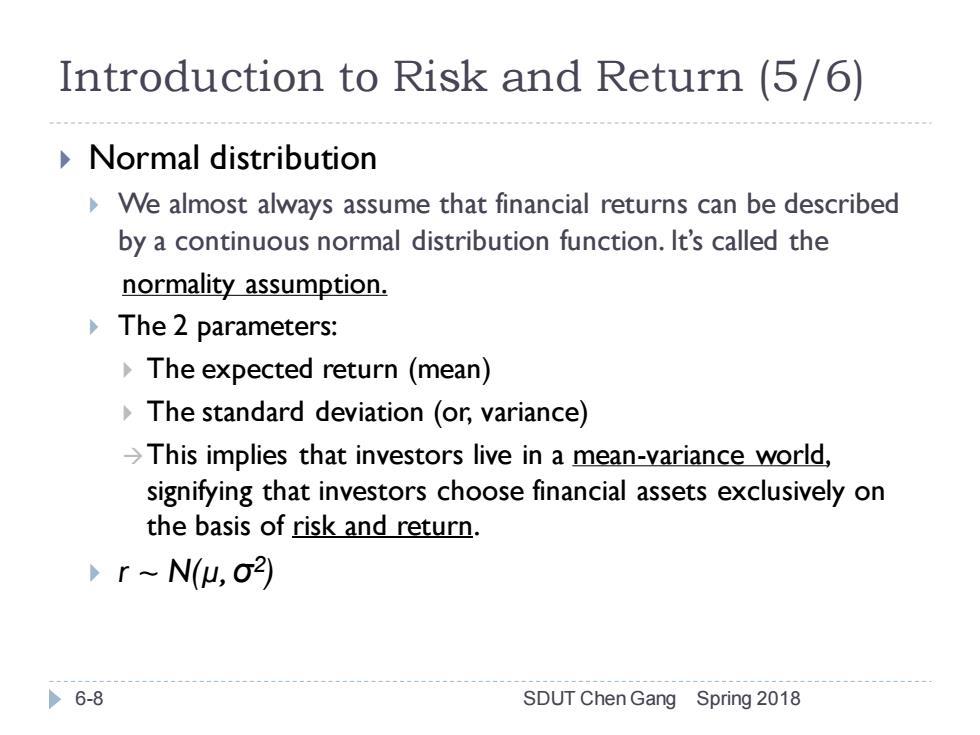
Introduction to Risk and Return (5/6) Normal distribution We almost always assume that financial returns can be described by a continuous normal distribution function.It's called the normality assumption. The 2 parameters: The expected return(mean) The standard deviation (or,variance) >This implies that investors live in a mean-variance world, signifying that investors choose financial assets exclusively on the basis of risk and return. >r~Nu,σ2) >6-8 SDUT Chen Gang Spring 2018
Normal distribution We almost always assume that financial returns can be described by a continuous normal distribution function. It’s called the normality assumption. The 2 parameters: The expected return (mean) The standard deviation (or, variance) →This implies that investors live in a mean-variance world, signifying that investors choose financial assets exclusively on the basis of risk and return. r ~ N(µ, σ 2 ) 6-8 SDUT Chen Gang Spring 2018 Introduction to Risk and Return (5/6)
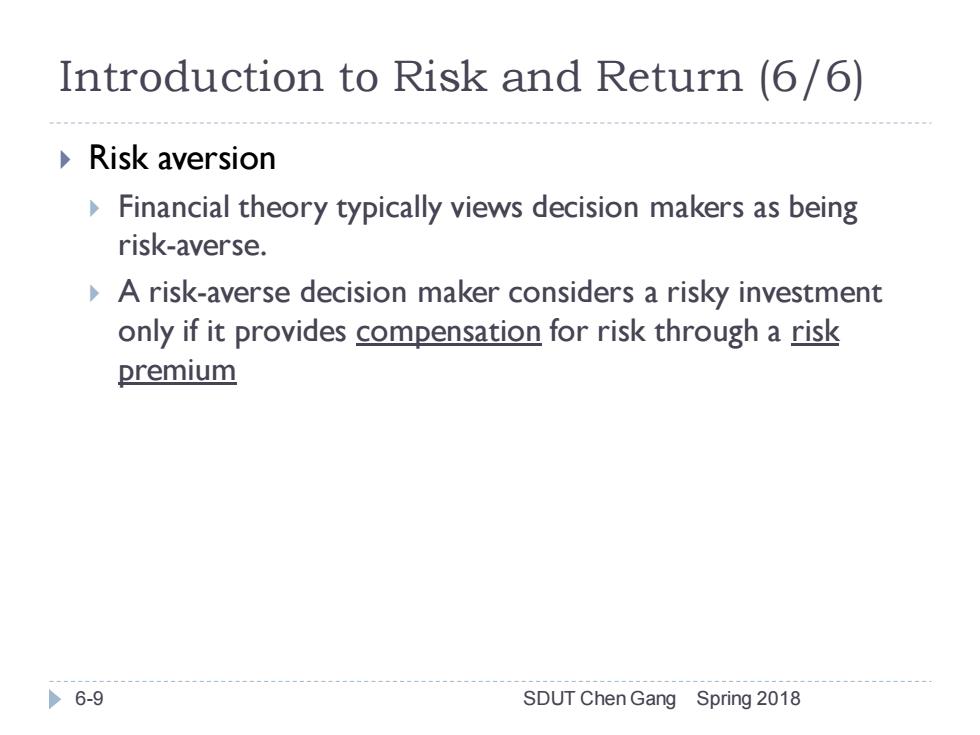
Introduction to Risk and Return (6/6) Risk aversion Financial theory typically views decision makers as being risk-averse. A risk-averse decision maker considers a risky investment only if it provides compensation for risk through a risk premium >6-9 SDUT Chen Gang Spring 2018
Risk aversion Financial theory typically views decision makers as being risk-averse. A risk-averse decision maker considers a risky investment only if it provides compensation for risk through a risk premium 6-9 SDUT Chen Gang Spring 2018 Introduction to Risk and Return (6/6)
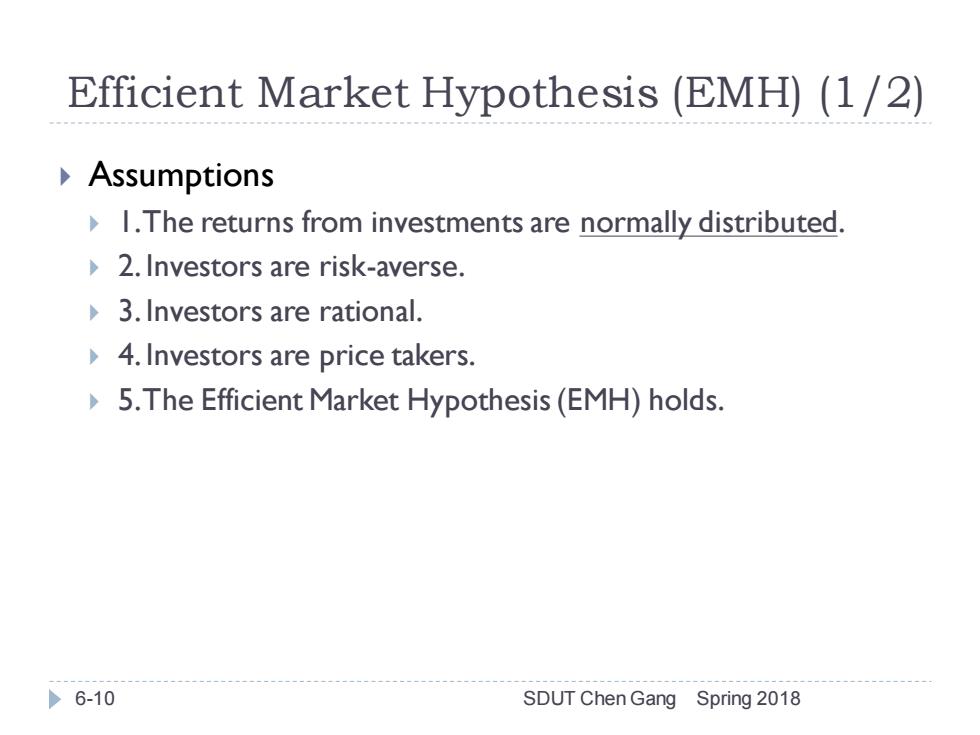
Efficient Market Hypothesis (EMH)(1/2) Assumptions 1.The returns from investments are normally distributed. 2.Investors are risk-averse. 3.Investors are rational. 4.Investors are price takers. 5.The Efficient Market Hypothesis(EMH)holds. >6-10 SDUT Chen Gang Spring 2018
Efficient Market Hypothesis (EMH) (1/2) Assumptions 1. The returns from investments are normally distributed. 2. Investors are risk-averse. 3. Investors are rational. 4. Investors are price takers. 5. The Efficient Market Hypothesis (EMH) holds. 6-10 SDUT Chen Gang Spring 2018